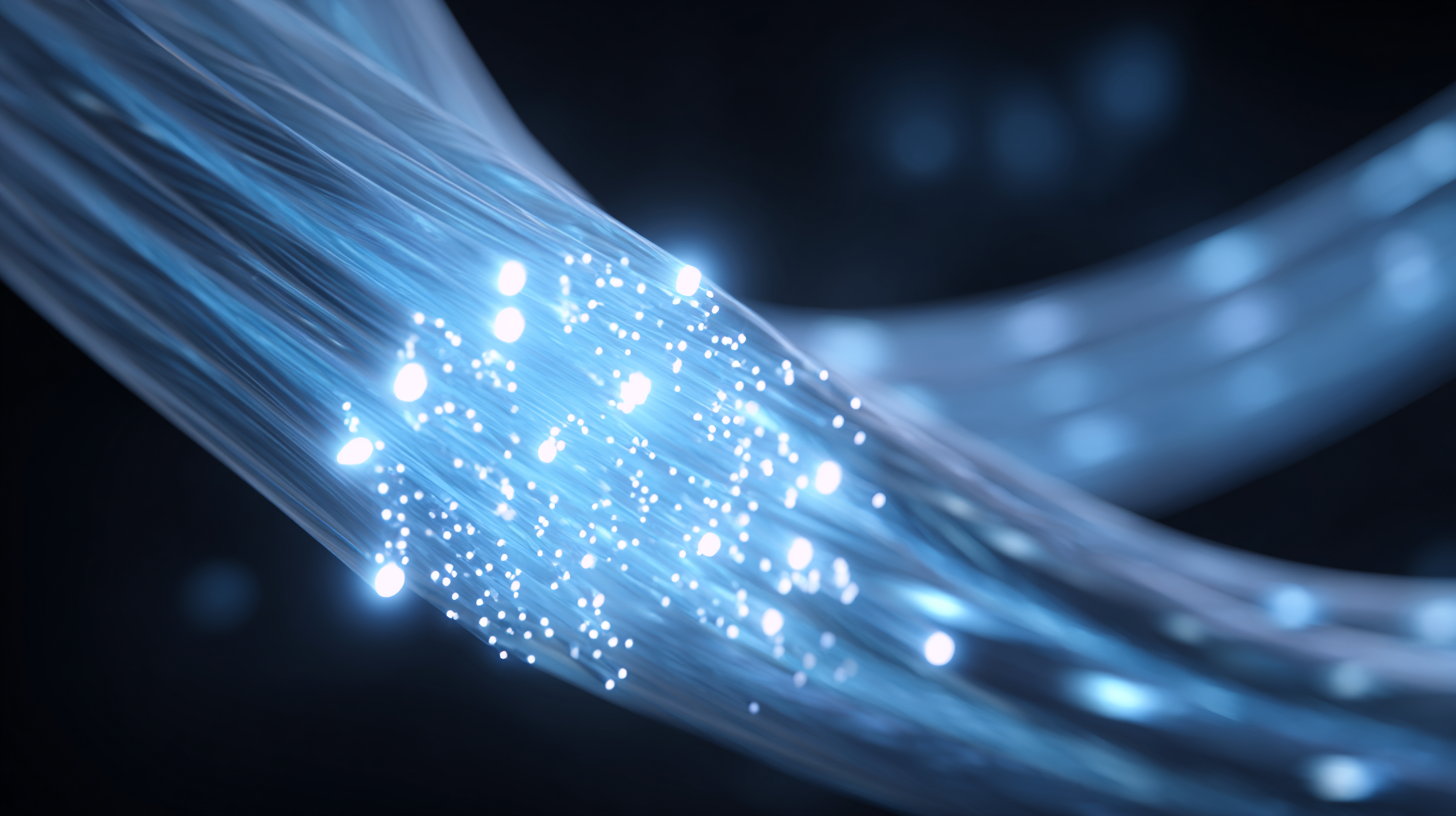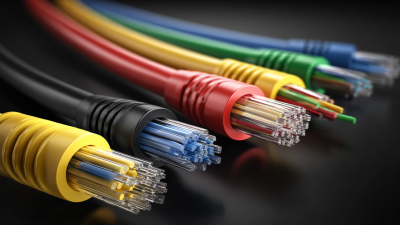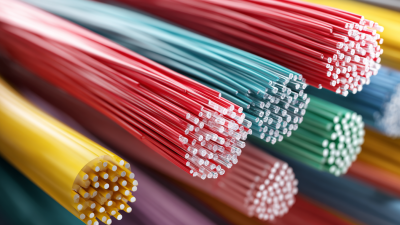Industries
Get direct access to our extensive portfolio of optical products and specialist technical expertise.
Get direct access to our extensive portfolio of optical products and specialist technical expertise.
In an age where the demand for faster and more reliable internet connectivity is continuously escalating, optical cables have emerged as a game-changer in the realm of data transfer. Renowned industry expert Dr. Emily Carter, a leading researcher in optical communication technology, states, "The advent of optical cables has not only increased data transfer speeds exponentially but has also transformed the way we think about connectivity." This innovative technology harnesses the power of light, enabling vast amounts of data to be transmitted over long distances with minimal loss, paving the way for advancements in various sectors, including telecommunications, entertainment, and cloud computing.
As we delve into the top ten ways optical cables are revolutionizing data transfer, it becomes evident that their impact is far-reaching and transformative. From enhancing broadband services to supporting the booming needs of data centers, optical cables are redefining the benchmarks of speed and efficiency. Their capability to facilitate large bandwidths while reducing latency has led to a paradigm shift, positioning them at the forefront of future connectivity solutions. This exploration will not only highlight the technological breakthroughs within the industry but also underscore the necessity of embracing this optical revolution for a more connected world.

The evolution of optical cables marks a significant turning point in the landscape of data transmission, offering unparalleled speed and capacity compared to traditional copper wires. Initially, the data transfer options relied heavily on electrical signals, which were limited in bandwidth and efficiency. As demands for faster internet and more reliable communications surged, researchers turned to light as a medium for data transfer. Optical fibers, composed of glass or plastic, utilize light pulses to transmit vast amounts of information over long distances with minimal loss, setting the stage for rapid advancements in digital connectivity.
In recent years, optical cables have undergone remarkable innovations, including the development of multi-core fibers and improvements in wavelength division multiplexing. These technologies allow multiple data channels to operate simultaneously, exponentially increasing the amount of information that can be carried at once. As a result, optical networking now supports everything from high-definition video streaming to cloud computing and massive data centers, propelling us into an era where instant communication and real-time data access have become the norm. This evolution not only enhances user experience but also lays the groundwork for future technologies, such as the Internet of Things (IoT) and smart cities, where seamless connectivity is paramount.
The advent of optical cables is poised to transform the landscape of data transfer, particularly in data centers where demand for speed and efficiency is surging due to AI workloads. Traditional copper wires are struggling to cope with the increasing data traffic, which has led to a growing preference for optical fiber solutions. Reports indicate that optical fibers offer superior data throughput and energy efficiency, with capabilities to support data rates up to 1.6T and beyond, rendering copper cables obsolete in high-performance environments.
Furthermore, the deployment of optical interconnects is revolutionizing storage solutions, as seen in the development of optical SSDs that utilize light signals over traditional electronic ones. This innovative approach not only enhances transmission speed over distances of up to 40 meters without any loss of performance but also significantly reduces energy consumption. Industry experts emphasize that transitioning to optical connections enables data centers to achieve more robust and scalable infrastructures, essential for handling the next generation of AI technology. As industries increasingly adopt optical solutions, the benefits of higher bandwidth, lower latency, and improved reliability will redefine connectivity standards in the years to come.

Optical fiber technology is rapidly becoming a cornerstone in various industries, transforming the way data is transferred and communicated. In the telecommunications sector, optical cables offer unprecedented bandwidth and speed, allowing for lightning-fast internet connections that support the explosion of streaming services and remote working. Furthermore, in the healthcare field, optical fibers are revolutionizing medical diagnostics; they're utilized in endoscopic procedures, enabling minimally invasive surgeries with precise imaging capabilities.
Tips: When considering the implementation of optical fiber technology in your business, evaluate the specific needs of your operations. Assess the required data speed and bandwidth, and choose the right type of optical cable, such as single-mode or multi-mode fibers, based on distance and application.
Beyond communications and healthcare, industries like automotive and aerospace are leveraging optical fibers for robust data transmission in sensor applications. These cables are integral components in advanced driver-assistance systems (ADAS) and in the functioning of aircraft systems, where reliable and fast data transmission is crucial for safety and efficiency.
Tips: To maximize the benefits of optical fiber integration, ensure proper training for your staff on handling and maintaining these cables. Proper installation and upkeep are key to unlocking the full potential of optical technologies in enhancing operational efficiency and innovation.
| Industry | Application | Benefits | Challenges |
|---|---|---|---|
| Telecommunications | Internet and Data Services | High-speed data transfer, low latency | Installation costs, fragility |
| Healthcare | Telemedicine and Imaging | Rapid transfer of large medical files | Need for specialized training |
| Entertainment | Streaming Services | Seamless HD content delivery | Network congestion during peak times |
| Manufacturing | Automation and IoT | Improved efficiency and real-time monitoring | Interoperability issues |
| Education | Online Learning Platforms | Enhanced learning experience through low latency | Digital divide in access |
The future of optical cables is poised for remarkable innovations that will redefine data transfer capabilities. Advances in materials science are leading to the development of new types of optical fibers that enhance performance while reducing costs. For instance, photonic crystal fibers are emerging as a game-changing technology, featuring intricate structures that allow for greater control over light propagation. This not only increases bandwidth but also minimizes signal loss, addressing one of the key challenges in current optical communication systems.
In addition to material advancements, smart integration of optical cables with emerging technologies such as artificial intelligence and the Internet of Things (IoT) is set to enhance functionality. Optical cables equipped with sensors can monitor performance in real-time, enabling proactive maintenance and optimization of networks. Furthermore, the potential for integration with wireless technologies signals a blended future where optical and wireless systems work in tandem, thereby increasing the efficiency and reliability of global communication infrastructures. These innovations signify a transformative shift in how we approach data transfer, paving the way for a more connected and efficient digital landscape.
 The widespread adoption of optical cables offers immense potential for enhancing data transfer speeds and bandwidth. However, several challenges must be addressed to facilitate this transition. One significant obstacle is the high cost of infrastructure development. While optical fiber technology has become more affordable, the installation of new cables can require substantial investment, especially in urban areas where existing networks are already entrenched. Additionally, regulatory hurdles can complicate deployment processes, as local governments often have strict guidelines regarding construction and public right-of-way.
The widespread adoption of optical cables offers immense potential for enhancing data transfer speeds and bandwidth. However, several challenges must be addressed to facilitate this transition. One significant obstacle is the high cost of infrastructure development. While optical fiber technology has become more affordable, the installation of new cables can require substantial investment, especially in urban areas where existing networks are already entrenched. Additionally, regulatory hurdles can complicate deployment processes, as local governments often have strict guidelines regarding construction and public right-of-way.
Another challenge lies in the technical expertise required for installation and maintenance of optical networks. This technology demands skilled personnel who are proficient not only in cabling but also in troubleshooting and optimizing performance. To overcome these barriers, industry stakeholders can invest in training programs that focus on developing a workforce adept at managing optical technologies. Furthermore, public-private partnerships can be instrumental in sharing the financial burden of infrastructure projects, thereby accelerating the deployment of optical cables and making high-speed internet access more universally accessible.





